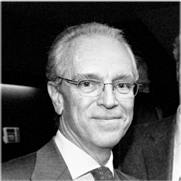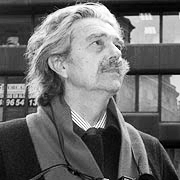Biography
1858
Enric Sagnier Villavecchia is born in Barcelona on 21 March.
1875
He begins his studies at the Barcelona School of Architecture.
1882
He qualifies as an architect. During this period he works as an assistant to Francesc de P. Villar on an intervention on the basilica of the monastery of Montserrat.
1886
Together with Josep Domènech i Estapà, he is commissioned to design the new Law Courts in Barcelona. The works, which begin the following year, continue until 1911.
1890
He is commissioned to build the New Customs House in Barcelona. The initial project is submitted in 1895 and work begins in 1896; it is finished in 1902.
1893
Sagnier is one of the cofounders of the Cercle Artístic de Sant Lluc, together with the brothers Josep and Joan Llimona, Antoni Utrillo, Alexandre de Riquer and others. In 1903 he becomes its president.
1900
He is proposed as president of the Asociación de Arquitectos de Cataluña but never takes possession of the post.
1902
The house built for Emili Juncadella wins the architecture prize awarded by the Barcelona city council for buildings finished in 1901.
1902
The foundation stone of the church on the Tibidabo is laid, but construction will continue until after his death. It is completed by his son Josep Maria in 1961.
1903
He is elected as provincial deputy to represent the Comité de Defensa Social.
1903
Architect to the Benedictine community of Montserrat, a post he is to hold until 1915.
1911
Sagnier enters the Academia de Bellas Artes de San Jorge de Barcelona.
1913
Founding member of the civic society La Ciudad Jardín (the Garden City).
1913
Guillem Llibre’s sweet shop, in the Plaça de Catalunya, receives the city council’s prize in the category of buildings finished in 1912.
1915
Sagnier is awarded the prize for establishments opened in 1913 for the Pere Comas tailor’s.
1916
Takes part in the 2nd Salón Nacional de Arquitectura, which is held in Barcelona.
1918
The Grupo Benéfico de la Junta de Protección de Menores, a charitable foundation located in the Poblenou district of Barcelona, receives the city council’s annual architecture prize corresponding to 1916.
1920
In the verdict for buildings finished in 1917, Enric Sagnier is awarded a special prize for the “Casal del Ahorro”, the headquarters of the Caja de Pensiones savings bank. This third award in the municipal competition earns him a gold medal, after which he was theoretically hors de concours.
1921
In the Barcelona city council’s architecture competition, Sagnier wins the prize in the detached house category for two buildings: the house for Ignasi Coll, in Avinguda Tibidabo (finished in 1918), and the villa for Lluís Rocamora (finished in 1919).
1923
Pope Pius XI awards him the papal title of marquis de Sagnier.
1924
Designated provincial deputy for public works.
1924
Member of the Junta de Museos de Barcelona (museums committee). Oversees the installation of its library.
1925
Member of the jury to choose the design for the Central Palace (now known as the Palau Nacional) on the Barcelona International Exposition site.
1927
Together with Bonaventura Bassegoda, fills the post of Barcelona cathedral architect.
1931
Dies in Barcelona on 2 September.

The grandfather I never knew
Tribute to Enric Sagnier of his grandson, now behind the project in favor of his recognition.



